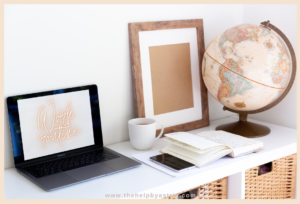
The recent pandemic has resulted in major disruptions in the way we work. Lockdowns forced employees to adopt a remote working or work from home work style. What was once offered as an employee benefit or a reward for tenure, has now become a viable option or a necessary way to work. The transition was not met without difficulty as a lot of businesses struggled with transitioning from a traditional and office-based work style to a more agile one.
The good news is that we’ve learned to adapt. By now, we have learned the lessons from “the great work from home experiment” and hopefully have chosen to use the take-aways to adapt a more flexible and productive remote working setup. If you’re still working from your home office, here are 5 tips to help you boost your work from home productivity.
- Take responsibility for your work schedule:
Set aside time for deep uninterrupted work and to coordinate and communicate with your co-workers. Let them know when they can expect you to be online so they know when they can reach you for questions or updates and when they should leave you alone to enjoy your personal time. Your workplace is, basically, unsupervised and would require motivation, self-discipline, and accountability from you. Set yourself up for success with a routine and a work schedule. - Value your personal boundaries:
Keep your work separate from your own personal time. Just because your home has now become your workplace, your work should not take over the entirety of your homelife. - Take regular breaks between tasks:
Don’t try to work all day without breaks. Be sure to rest your eyes, drink water, and take regular breaks to stretch in between long periods of sitting down. Remember that people work best when they perform in their best shape physically and mentally. - Have a dedicated workspace:
Just like it was back at the office, it is important to maintain a working environment that is conducive for efficiency and productivity. Carve out a nice, cool, quiet space to claim as yours. Make sure it has good lighting and great ventilation. More importantly, make sure that it exposes you to the most minimal distractions. - Be mindful of your accomplishments:
Stay motivated by being aware or making a list of what you are able to achieve at the end of each day. Isolation comes with working from home, so it is important that you keep yourself motivated and psyched for work.
Good health and peace of mind are always essential for a healthy work-life balance. Your personal well-being is just as important as your work productivity. Sometimes, it could be quite a challenge to find the right balance between the two. Hopefully, these 5 tips will help.
Do you have any tips for boosting your work from home productivity while improving your wellbeing at the same time? Share them with us in the comments. Remember to work smart and be a blessing to someone today. Stay safe and healthy!
Written by Jaie O. TheHelp



